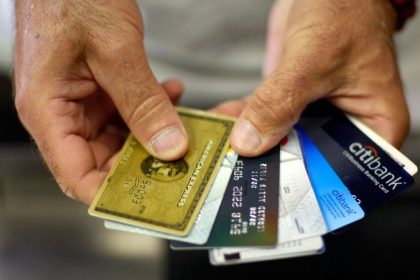If you sell goods or services or rent property, and get paid through Venmo, PayPal, Cash App or another payment app, you may have been surprised by a Form 1099-K this year.
Here’s why you might be among the millions of taxpayers who got this form for the first time: If you received a total of $5,000 or more through a payment app in 2024, that company is now required to report that amount to you — and to the IRS.
The standard before 2024 was that a 1099-K had to be issued only if you received $20,000 or more and had more than 200 transactions. Now the threshold dollar amount is much lower, and there’s no minimum transaction requirement.
And that threshold amount is slated to drop even more, with even more people likely to receive 1099-Ks next year: The $5,000 reporting threshold for tax year 2024 drops to $2,500 for 2025 and then plummets to $600 for 2026 and beyond.
While the new reporting rules might be a shock to some freelancers or people with side hustles, technically the tax rules didn’t change: You were always supposed to report that income to the IRS.
What is the 1099-K?
The 1099-K form reports payments for goods and services received from credit cards, mobile payment apps, online marketplaces, auction sites, ride-hailing apps, crowdfunding sites and more. Form 1099-K must be sent to taxpayers by Jan. 31 of the following year. That is, you should have received your 1099-K for 2024 by the end of January 2025. (See the 2025 tax deadlines.)
If you sell goods or services, or rent out property, the money you earn is generally taxable income (which, don’t forget, you can reduce by your costs, including qualified business deductions). Even selling your own clothes or furniture could count as taxable income, the IRS says, if you earned a profit.
If, however, you’re using Venmo or another payment app to pay your friend back for dinner, or to send a birthday present to your sister, this money shouldn’t be reported on a 1099-K. If you do receive a 1099-K, you’ll want to check to make sure that only taxable income is included on the form. (See below for how to deal with incorrect 1099-Ks.)
The income threshold for Form 1099-K was lowered to $600 as part of the American Rescue Plan Act (ARPA) of 2021. Prior to ARPA’s passage, only total payments of $20,000 or more, and more than 200 transactions, required a Form 1099-K.
During the debate over ARPA, tax pros and others expressed opposition to the lowered payment thresholds, with the American Institute of Certified Public Accountants among those warning Congress that the lower threshold would lead to confusion and errors. Ultimately, the IRS postponed the new reporting requirements in 2022 and 2023, allowing more time for the payment apps, officially known as third-party settlement organizations, to conform.
New 1099-K reporting requirements
To give third-party settlement organizations more time to comply with 1099-K reporting requirements, in 2024 the IRS announced a phased-in approach to the reporting rules:
| Year | 1099-K reporting thresholds |
|---|---|
| 2023 and earlier | $20,000+ and 200+ transactions |
| 2024 | $5,000+ |
| 2025 | $2,500+ |
| 2026 | $600+ |
Not all payment apps are alike
While taxpayers can expect Form 1099-Ks from PayPal, Venmo, or Cash App, Zelle won’t be included in that list.
“The Zelle platform directly transfers funds from one bank account to another, similar to a wire transfer. Thus, it never has custody of the funds, it simply moves money,” says Monica Houston, a certified public accountant in Brentwood, Calif.
Therefore, Zelle transactions are not subject to reporting requirements.
Who is likely to receive a 1099-K?
The Form 1099-K is issued to taxpayers who receive direct payments for selling goods or providing services. While the reporting income threshold is $5,000 for 2024, in some cases you may receive a Form 1099-K even if the dollar amount is below the reporting threshold.
Whether you receive a Form 1099-K or not, if you received taxable income from the sales of goods or services, you’ll need to report it on your tax return.
What if you get an incorrect 1099-K?
If you used a payment app to exchange money with friends and family, that exchange isn’t taxable, and you shouldn’t receive a Form 1099-K for those transactions.
If you do receive a 1099-K with these types of transactions reported, then you shouldn’t report these as taxable income. Instead, contact the issuer of the Form 1099-K, request that they remove these items from the form and reissue a corrected Form 1099-K. The IRS has instructions on how to handle this situation.
If you use payment apps for personal and business use, then it makes sense to have a solid accounting system to clearly distinguish between business and personal payments.
“I recommend using an Excel spreadsheet or consider using QuickBooks online to adopt a computerized accounting system,” Houston says. Taking these steps can ensure you report your income correctly on your income tax return.
How to report income reported on Form 1099-K
Form 1099-K reports various types of payments, which affect how you report your income on your Form 1040 and related forms and schedules. If you sold personal items, you will need to report them on your tax return. If the item was sold for a loss, you cannot deduct the loss from your taxes, but you can zero out the reported income. However, if you sold an item for a profit, you must report the profit, which is the amount received less your cost, as taxable income.
Whether you receive payments for goods sold, services provided or rental property, these must be reported on your tax return. Freelancers, gig workers and self-employed people generally report income on Schedule C of their income tax returns. Rent payments are reported on Schedule E.
Houston stresses the importance of staying abreast of the new tax law changes and encourages taxpayers to take an active part in the tax process. “I highly recommend that they enlist assistance from a qualified tax professional in the final preparation of their return especially if they are receiving a Form 1099-K. The return on investment is usually worth it in many ways,” Houston says.
Learn more
Read the full article here
















